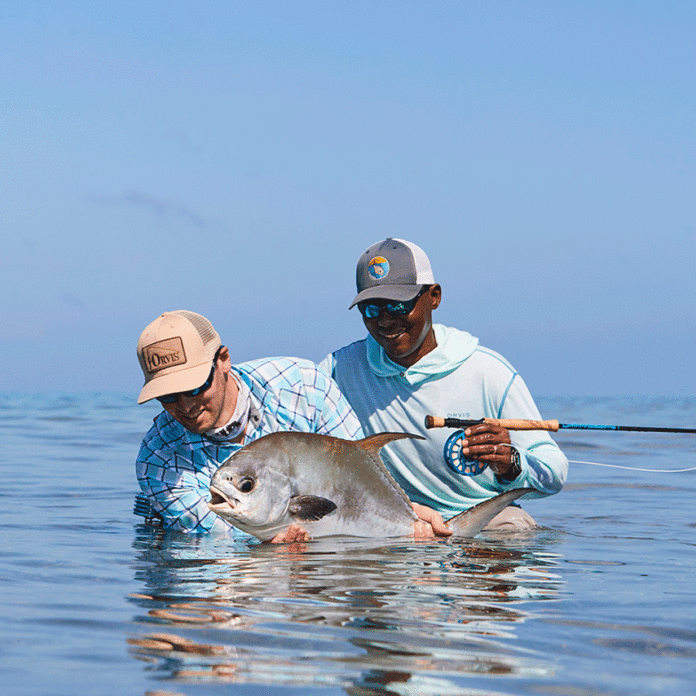Written by: Evan Jones
After learning the hard way why rental companies don’t allow small sedans on that road–water was coming in through the doors–we finally arrived, bug-bitten and damp, at the small village of Punta Allen. Despite our lack of reservations, I was able to find both a place to stay and a local guide who would take us out to look for permit in the morning. He turned out to be quite well-versed in this particular pursuit, so it wasn’t long after sunrise that we saw those trademark black sickle tails poking up above the surface. I carefully exited the boat with the guide’s young helper at my side, and we did our best to follow the fish through waist-deep water as they zig-zagged aimlessly across the flat. And then, without warning, they turned and headed straight for us. My cast landed perfectly in the space between us as I waited breathlessly for them to spook, but onward they came. Slowly I began to crawl my weighted crab across the bottom, and as if I were filming a National Geographic special, the lead fish –a solid ten pounder–tipped down and inhaled my fly about 30 feet from my rod tip. I even remembered to strip set.
So there I was, hooked solidly into a nice Permit, on a wide flat with no obstructions or snags anywhere in sight, just listening to the sound of my reel spin as my quarry rocketed into the distance. The guys back home would be so jealous. After a couple more runs, it was time to land this fish and snap a photo that I would be using on every social media site for years to come. The first time I brought it close, the guide’s helper missed the fish as it swam by. Same for the second attempt. And the third. By this point, everyone was getting a little nervous, and I remember the guide saying something akin to “easy fellas” when the fish made another pass. This time, the guide’s helper grabbed the leader a few feet above the fish, and it parted with a crisp pop! that echoed the sound of my breaking heart.
I stared wide-eyed at the kid, who stared up at the guide, who stared back down at both of us while my wife stared off into the distance, everyone seemingly afraid to acknowledge what had just happened. Eventually the guide muttered “bad knot,” and we all just hung our heads and slunk back into the boat, knowing that further blame was pointless. We didn’t end up getting any more shots that day, so I had to leave the next morning with nothing but a vague assurance that touching the leader is technically equivalent to landing the fish.
Lessons Learned: when joining two lines of differing diameter (as I did when adding a 12-pound tippet to a 30-pound saltwater leader) use a specialty dedicated knot like a Slim Beauty, rather than trying to force a Blood Knot to do a job it wasn’t designed for. Also, while landing fish quickly is good, trying to land a fish too quickly can result in chaos and regret.
Evan Jones is the assistant editor of the Orvis Fly Fishing blog. He lives in Colorado.
Credit: Source link































